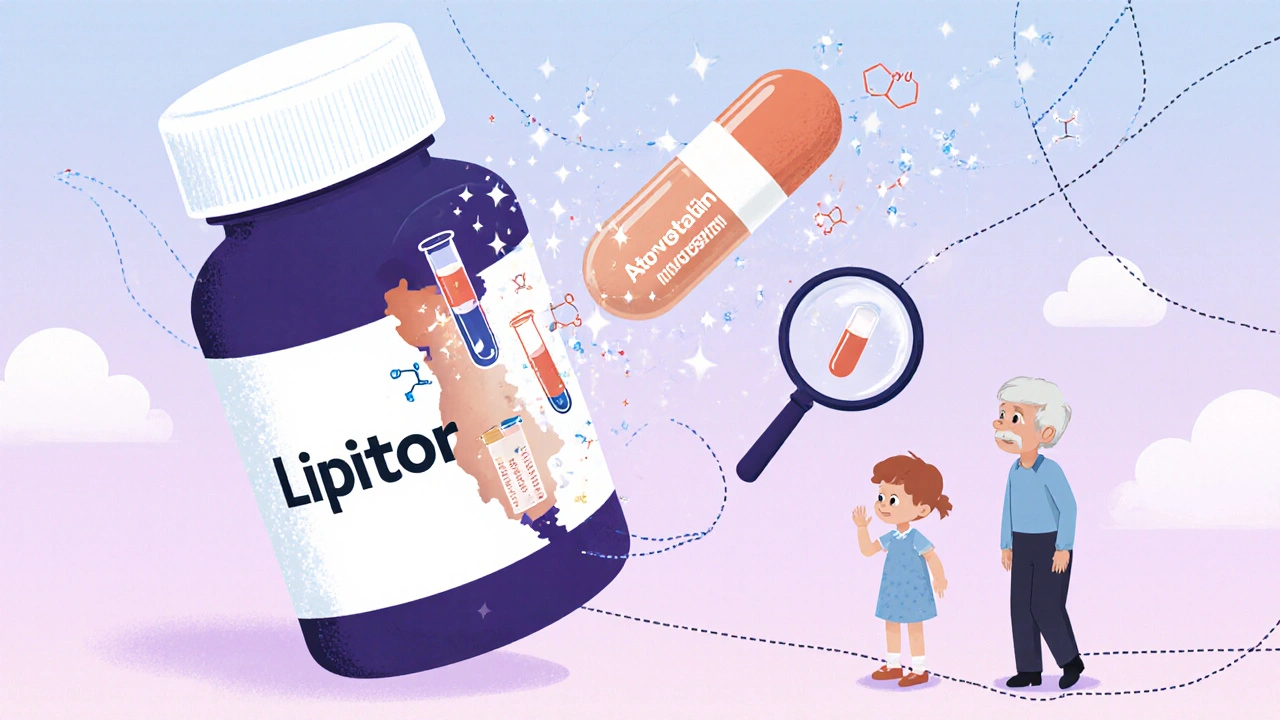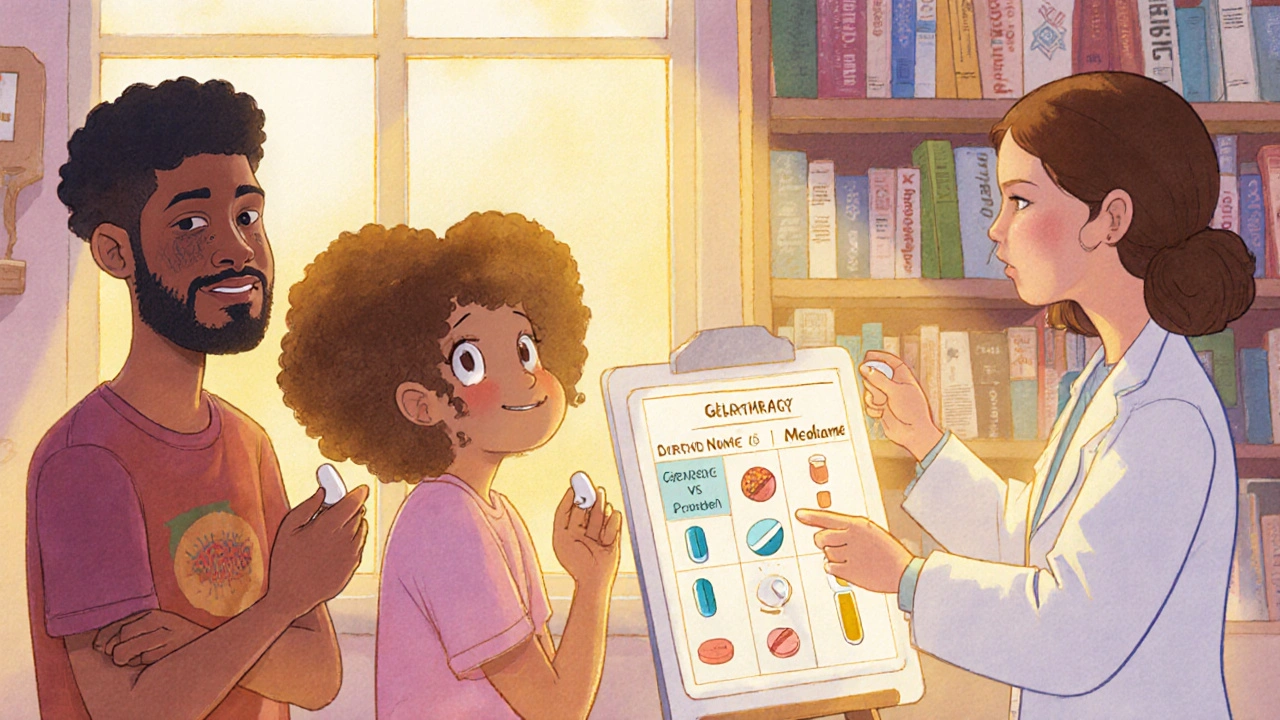Why so many people still don’t trust generic drugs
You walk into the pharmacy, handed a small white pill instead of the blue one you’ve been taking for years. The pharmacist says, "It’s the same medicine, just cheaper." But you’re not sure. Is it really the same? Did they cut corners? You’ve heard stories-people switching to generics and feeling worse. You’re not alone. Nearly 4 in 10 Americans still believe generic drugs aren’t as good as brand-name ones, even though the FDA says they’re required to work the same way.
The truth? Generic drugs aren’t just cheaper-they’re rigorously tested to match brand-name drugs in every way that matters. The active ingredient? Identical. The strength? The same. The way your body absorbs it? Within 80% to 125% of the brand. That’s not a guess-it’s a legal requirement. The FDA doesn’t approve a generic unless it delivers the same effect in your bloodstream as the original. In fact, over 98% of the 11,000 generic drugs approved since 2010 met this standard.
What makes a generic drug "the same"?
Let’s break it down. A generic drug has to contain the exact same active ingredient as the brand-name version. If your brand is Nexium (esomeprazole), the generic is just esomeprazole. Same molecule. Same chemical structure. Same job in your body-to reduce stomach acid.
It also has to match the brand in strength (like 20mg), how it’s taken (pill, liquid, injection), and how fast it works. The FDA requires that the generic releases the drug into your blood at the same rate and amount as the brand. That’s called bioequivalence. It’s not a marketing term-it’s a scientific test done in labs with real people.
What’s different? The color, shape, flavor, or filler ingredients. Maybe the generic is oval instead of round. Maybe it uses cornstarch instead of lactose. Those don’t affect how the drug works. They’re just there to make the pill look different or easier to swallow. Think of it like cereal: store-brand oatmeal tastes the same as the name-brand, even if the box is different. The oats are the same.
The biggest myth: "Generics are weaker"
One of the most common fears? That generics don’t work as well. That’s not true-for most drugs. But it’s not just misinformation. It’s often caused by how the message is delivered. Too many guides say, "It’s exactly the same," and that’s misleading. It’s not *exactly* the same. It’s equivalent in effect. And that’s a crucial difference.
Some medications, like warfarin (a blood thinner), levothyroxine (for thyroid), or phenytoin (for seizures), have a narrow therapeutic index. That means even tiny changes in how the drug is absorbed can matter. For these, doctors sometimes recommend sticking with one brand or generic manufacturer to keep levels stable. But that’s not because generics are inferior-it’s because consistency matters more here. The FDA allows multiple manufacturers to make these generics, but some patients respond better to one formulation than another. That’s why pharmacists are now trained to ask: "Have you taken this generic before? Did it work okay?"
And here’s something most people don’t know: authorized generics exist. These are brand-name drugs made by the same company but sold under a generic label. They’re identical in every way-same factory, same ingredients, same packaging, just no brand name. They have 28% lower switch-back rates than regular generics because patients recognize them as the same product.

How to spot a good generic drug guide
Not all patient education materials are created equal. Some are full of jargon. Others oversimplify to the point of being wrong. The best ones follow three rules:
- Use plain language. No "bioequivalence." Say "works the same in your body."
- Include visuals. Side-by-side images of brand and generic pills help people connect the dots.
- Use "teach-back." Ask: "Can you tell me in your own words why this generic is safe?"
The FDA’s "Generic Drug Facts" page is one of the clearest resources out there. It uses real examples: Tylenol = acetaminophen, Lipitor = atorvastatin. It shows the chemical name, the generic name, and the brand name side by side. A 2022 survey found that 82% of pharmacists said this chart reduced patient confusion.
Pharmacies like CVS, Walgreens, and Walmart now use standardized guides based on FDA templates. They’re short-under 500 words-and written at a 6th-grade reading level. That’s the NIH gold standard. And they’re not just handouts. Pharmacists are trained to spend 90 seconds explaining generics using three key points:
- Same active ingredient
- Same effect in your body
- Same cost savings-on average, $387 less per prescription
When generics might not be the best fit
There are exceptions. And they matter.
In 2012, the FDA pulled a generic version of Wellbutrin XL because it didn’t release the drug properly. It wasn’t bioequivalent. That’s rare-but it happened. That’s why some doctors still prefer brand-name drugs for certain conditions, especially when a patient has had bad reactions to a generic before.
Levothyroxine is another example. While most generics work fine, some patients report feeling off after switching. Studies show that if you switch between different generic brands of levothyroxine, your thyroid levels can fluctuate. That’s why the American Association of Clinical Endocrinologists recommends staying on the same manufacturer if you’re stable. It’s not about quality-it’s about consistency.
And don’t forget: if you’re on a narrow therapeutic index drug, always tell your doctor if you switch. They may want to check your blood levels after the change.
Why this matters: cost, trust, and health
Generic drugs saved the U.S. healthcare system nearly $2 trillion between 2009 and 2019. In 2022, 90.9% of all prescriptions filled were generics. But they only made up 22.3% of total drug spending. That’s the power of generics-same results, way less cost.
Yet, confusion costs money. When people avoid generics because they think they’re inferior, they end up paying more for brand-name drugs. The Association for Accessible Medicines estimates that misunderstanding costs the system $3.2 billion a year in unnecessary prescriptions.
But it’s not just about money. It’s about health. People who understand their meds are more likely to take them. The FDA found that when patients get a clear, plain-language explanation about generics, adherence increases by 22%. That means fewer hospital visits, fewer complications, and better outcomes.
What’s next for patient education?
The FDA launched a $4.7 million initiative in 2023 to create medication-specific guides for drugs like warfarin and levothyroxine. Starting in January 2025, Medicare Part D plans will be required to provide standardized education materials that meet NIH health literacy standards.
AI tools are also being tested. Kaiser Permanente is piloting systems that customize generic explanations based on your literacy level and medication history. Imagine getting a tailored message on your phone: "Your generic atorvastatin works just like Lipitor. Here’s what to watch for."
By 2026, most generic drug education will likely come from your electronic health record-automatically triggered when your doctor prescribes a generic. No more guesswork. Just clear, personal info.
What you can do today
Don’t assume. Don’t panic. Ask.
If you’re handed a generic, ask your pharmacist:
- "Is this the same active ingredient as my brand?"
- "Has this worked for other people on the same medicine?"
- "Should I stick with the same manufacturer?"
Check the FDA’s website for their "Generic Drug Facts" page. Look at the pill images. Compare the names. It’s not magic-it’s science. And it’s designed to help you.
Most of all, if you feel different after switching-tell your doctor. Not because generics are bad, but because your body is unique. And you deserve to feel your best, no matter what’s on the pill bottle.
Are generic drugs really as effective as brand-name drugs?
Yes, for most medications. The FDA requires generic drugs to contain the same active ingredient, in the same strength, and deliver the same effect in your body as the brand-name version. They must meet strict bioequivalence standards-delivering 80% to 125% of the blood concentration of the brand. Over 98% of generics approved since 2010 met this requirement. The only difference is usually the color, shape, or inactive ingredients, which don’t affect how the drug works.
Why do some people feel worse after switching to a generic?
For most people, they don’t. But for certain medications-like levothyroxine, warfarin, or phenytoin-small differences in how the drug is absorbed can matter. These are called narrow therapeutic index drugs. If you switch between different generic manufacturers, your body might respond differently. That’s why doctors sometimes recommend staying with one brand or manufacturer. It’s not that generics are weaker-it’s about consistency. If you feel different after switching, tell your doctor. They may check your blood levels or suggest sticking with one version.
What’s an authorized generic?
An authorized generic is the exact same drug as the brand-name version, made by the same company, and sold under a generic label. It’s not a copy-it’s the original. These often have lower switch-back rates because patients recognize the pill’s appearance and feel more confident using it. They’re usually cheaper than the brand but identical in every way.
Can I trust the FDA’s generic drug approval process?
Yes. The FDA inspects manufacturing sites for generics just like they do for brand-name drugs. They require the same quality controls, testing, and safety standards. Generic manufacturers must prove their product works the same way in the body before it’s approved. The FDA also monitors reports of problems after a drug is on the market. If a generic fails to meet standards, it’s pulled-like the case with a generic version of Wellbutrin XL in 2012.
How do I know if my generic is working?
If you’re taking a medication for a condition like high blood pressure, diabetes, or depression, you should notice the same results as before. If you feel worse, have new side effects, or your symptoms return, talk to your doctor. For some drugs-like thyroid medication or blood thinners-you may need a blood test to check levels. Don’t assume it’s the generic. But don’t ignore changes, either. Your doctor can help you figure out if it’s the medication or something else.
Where can I find reliable information about my generic drug?
Start with the FDA’s "Generic Drugs" webpage, updated quarterly. It has simple explanations, pill images, and comparisons between brand and generic names. Your pharmacist is also a trusted source-they’re trained to explain generics in plain language. Avoid relying on social media stories or unverified websites. Stick to official sources like the FDA, CDC, or your health plan’s educational materials.

Richard Risemberg
November 19, 2025 AT 01:51Man, I used to be scared of generics too-thought they were like knockoff sneakers that fall apart after a week. Then I switched my blood pressure med to generic lisinopril and saved $120 a month. Still feel fine. No weird side effects. My dog even noticed I was less grumpy. Turns out, science isn’t lying. The FDA doesn’t play around. If your pill looks different but works the same, that’s not a scam-it’s a win.